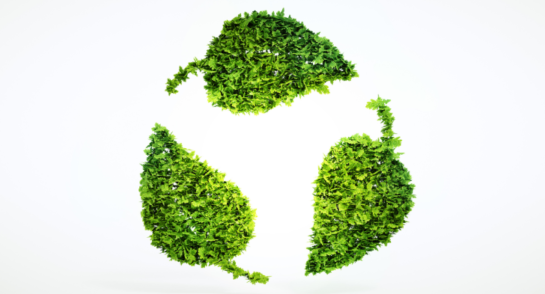Today is Earth Day. A day to celebrate what unites all of us human beings around the world — our shared home, planet earth. And yet, for as long as I can remember, this day is one that brings up grim reminders about how the delicate balance that makes planet earth a habitable home is under attack.
The climate crisis is here – are we?
Just in time for this year’s ‘celebrations’, the intergovernmental panel on climate change (IPCC) has released its newest report. Once again, the report is sounding the alarm bells on global decision makers by exposing the inadequacy of current pledges and policies in combatting the climate crisis: The Paris Climate Agreement, signed and ratified by 191 countries, manifested the imperative to limit global warming to below 2°C. The goal is to prevent us from crossing a range of tipping points that tilt the earth’s stable balance and unleash climate dynamics that are beyond the control of humans. And yet, current commitments as reported through the nationally determined contributions (NDCs) are putting us on a trajectory towards 3.2° C of warming — too little, too late, one might say.
The new IPCC report also sets out guidance on the system transformations required to further cut down emissions. Notably, for the first time, the report explicitly highlights the role of circular material flows in achieving significant reductions in the industrial sector’s carbon footprint. This has not been taken into account in the majority of current modelling and NDCs. Yet, according to a variety of research, holds significant potential to achieve further emission reductions and bring us on a path to the aspired 2°C world 1 2 3. Reason for hope? Not just yet – the proof of the pudding is in the eating and the slow pace of transformation we are seeing on the decarbonisation of our energy systems does not exactly encourage hope.
Money makes the world go round — and circular
There are more reasons for optimism, though, as several economic dynamics are realigning our pursuit of economic growth with a more resource-efficient, circular economy. The contradiction seems evident—How can growth ever go along with increased resource efficiency? The answer lies in the evolving nature of economic growth. Economic buzzwords that shaped recent years proclaim the digital age, characterised by a sharing economy, increased servitization of equipment, and the circular economy. Driven by ever more, and increasingly accurate, real-time data, the focus of growth lies in providing more value with less physical resources – less materials, less labor and less emissions. The challenges and disruptions thrust upon global supply chains by the global pandemic and the war in Ukraine have dramatically accelerated this process. They have made it abundantly clear that a circular economy can not only help us reach climate objectives but in fact, it is critical to achieving commercial success and building resilience in a world of supply chain disruption and digitisation.
The eating of the pudding – The service supply chain
The key to responding to these changes is to pivot away from the current ‘Make it – Ship it – Forget it’ model and towards a circular model of material and product flow. This is where a hidden champion of supply chain management comes into play – the service supply chain, including reverse logistics. A circular service supply chain is centred on managing and optimising the life cycle of products, by keeping them in use and functioning for as long as possible and preventing them from becoming waste, thereby checking two of the three key principles of a Circular Economy4. It allows us to avoid new product manufacturing, thereby reducing depletion of critical materials and the emissions embedded in virgin resource extraction and manufacturing processes. Simultaneously, we can also reduce waste volumes and the risks of pollution from landfills and waste leakage into ecosystems and even optimise transport to further slash greenhouse gas emissions.
Whilst delivering the listed environmental benefits, effective and circular service supply chain management is proven to enable increased uptime and functionality in products and directly drives customer value. It cuts costs of forgotten inventory hibernating away in warehouses and reduces unnecessary shipments of parts that can be handled locally.
Data for the planet
The secret behind effective service supply chain management lies in data and the visibility it provides into the efficiency, customer value and circularity that is delivered. The reality is that this data is often not being collected in the necessary detail, sits in different pockets of organisational siloes and flows through different systems that are disconnected. Achieving such visibility and organising to shape data driven transformation is by no means an easy feat: It requires collection of new data across the full scope of product life cycles and it requires aligning what used to be disparate systems and creating the intersections that allow for oversight and control.
Invest in the planet, by investing in future proof, circular supply chains
The theme of Earth Day in 2022 is ‘invest in the planet’. At OnProcess we believe that investing in the planet and investing in your supply chain should be two sides of the same coin. The climate crisis is here, and it is too late to think about sustainability as a separate investment. On the flipside, the return of investments in circular, decarbonised and resilient supply chains has never been greater.
REFERENCES
1. IRP (2020). Resource Efficiency and Climate Change: Material Efficiency Strategies for a Low-Carbon Future. Hertwich, E., Lifset, R., Pauliuk, S., Heeren, N. A report of the International Resource Panel. United Nations Environment Programme, Nairobi, Kenya.
2. Circle Economy. (2021). The circularity gap report 2021 (pp. 1-71, Rep.). Amsterdam: Circle Economy.
3. Ellen MacArthur Foundation. (2019). Completing the picture: How the circular economy tackles climate change.
4. Ellen MacArthur Foundation. (2022) Circular economy introduction – Overview. (n.d.). How to build a circular economy
RELATED CONTENT


Infographic: Is anyone using AI and Machine Learning in the Service Supply Chain?




Sign up for updates
Get the latest updates on our new services and fresh content — straight to your inbox.
